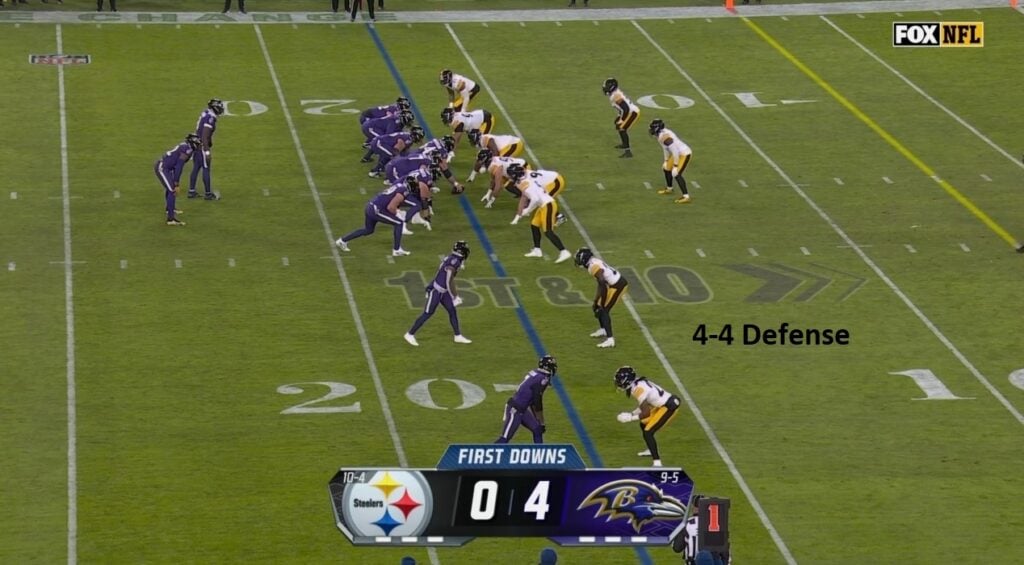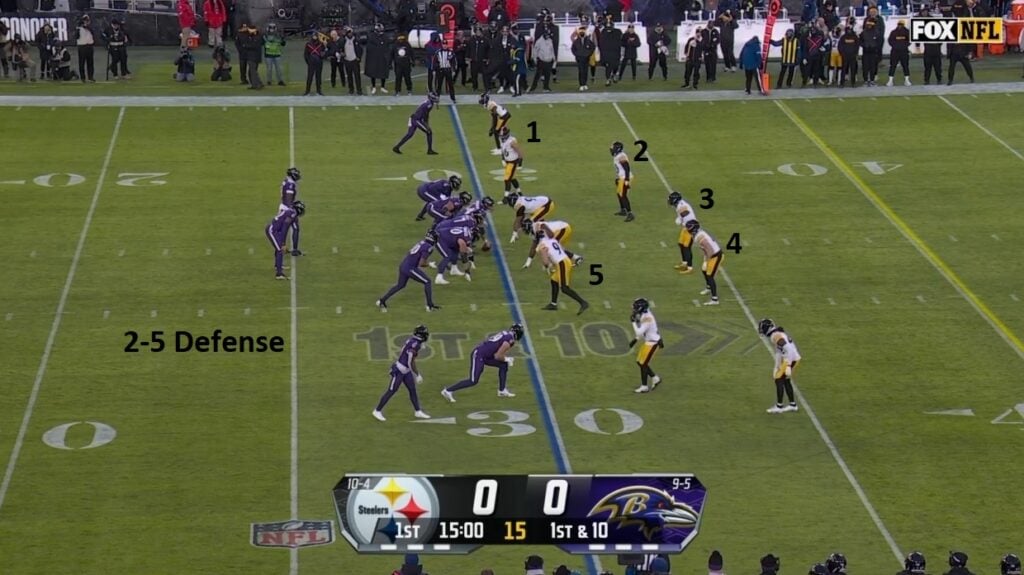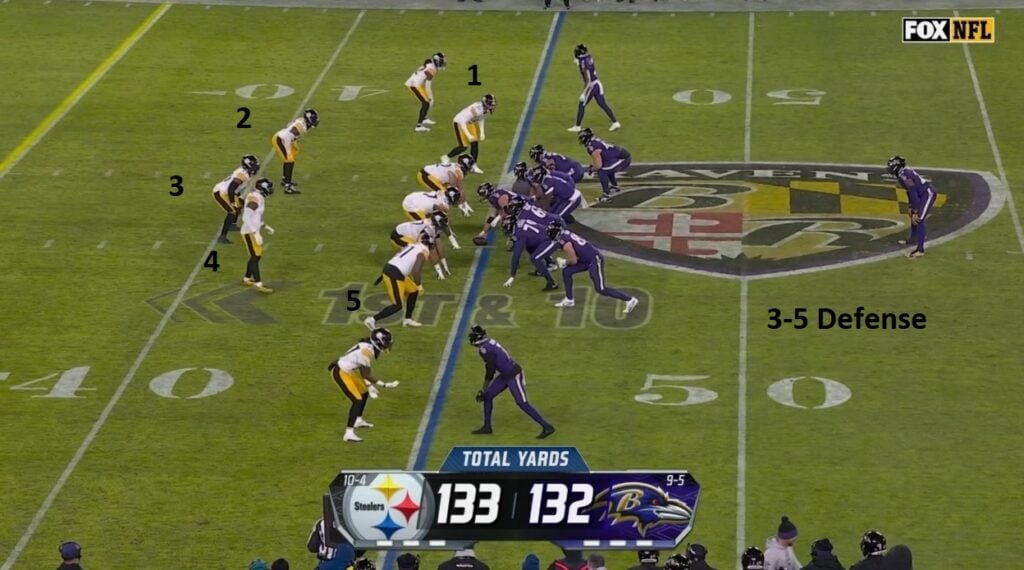Hampered by injuries, a short week, and a tough opponent in the Baltimore Ravens, the Pittsburgh Steelers pulled out all the stops to minimize Derrick Henry. But by game’s end, he reigned as King Henry yet again, rushing for 162 yards and rolling through and past the Steelers’ defense on the way to a big Baltimore victory.
Pittsburgh threw everything it had at Henry. Different and new personnel groupings, utilizing every idea and every healthy player on an effort to slow him down. Ultimately, talent wins out, and Henry proved to be too much.
Below is a chart of the groupings the Steelers used against Baltimore. Pittsburgh played five different “big” groupings against the Ravens and we could break them down even further. This chart shows the Ravens’ rush attempts, yards, yards per carry, and run-success rate against each look.
| Grouping | Rushes/Yards/YPC | Run Success Rate |
|---|---|---|
| 3-4 | 13/109/8.4 | 76.9% |
| Nickel | 10/72/7.2 | 60% |
| 4-4 | 5/26/5.2 | 40% |
| 2-5 | 4/11/2.8 | 50% |
| 3-5 | 2/-3/-1.5 | 0% |
Pittsburgh still used its traditional base 3-4 most often. It was a failure. Baltimore averaged more than eight yards per carry against it and had a successful run more than three-quarters of the time. Nickel didn’t fare much better, the Steelers giving up over seven yards per attempt and a 60-percent run-success rate.
The rest are Pittsburgh’s specialty packages. A 4-4 front that had two variations I’ve lumped together in the above table. A 4-4 with two cornerbacks and one safety or a 4-4 with one cornerback and two safeties, depending on if the Ravens came out with one or two wide receivers.
Baltimore’s run-success rate was lower at 40 percent, but it still generated a healthy 5.2 yards per carry, including runs of nine and 13 yards. Pittsburgh only tightened up late in the game when the Ravens were running out the clock.
The 2-5 and 3-5 were five-linebacker groupings with three inside linebackers on the field. Either Patrick Queen, Elandon Roberts, and Payton Wilson or Mark Robinson subbed in for Wilson. This was deployed whenever the Ravens used FB Patrick Ricard, matching big-on-big personnel. Like the 4-4, this varied between using one or two corners depending on how many receivers took the field.
This group did have more success though the sample sizes are small. But even the 2-5 allowed half of Baltimore’s runs to be successful. Only the 3-5 truly worked against just two runs, the most notable being Elandon Roberts’ third-down tackle for loss.
The Steelers often get creative on defense and have for years. It used to be a pretty cut-and-dry approach of playing base 3-4, 2-4-5 nickel, and a dime package. But as offenses have become more specialized and the need to match personnel greater, the Steelers have added all new wrinkles to their playbook. In a game like this, they couldn’t use their three-safety packages to defend the Ravens’ two tight ends like usual. Short at corner and safety, they didn’t play a single snap of dime defense.
But no matter how creative teams get, the ball gets snapped. Defenders have to fit their gap, get off blocks, make the tackle. Pittsburgh severely lacked there on Saturday and paid the price for it.











